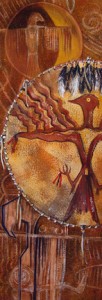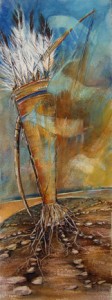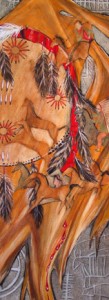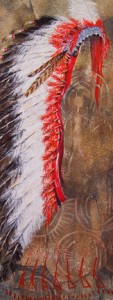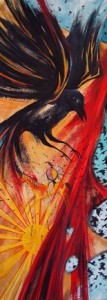“Progress”
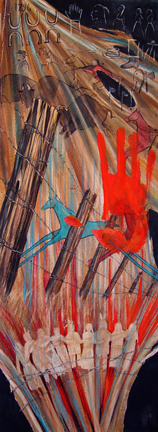 “The Devil’s Rope” 11 x 30” Watercolor and Gouache on Paper
“The Devil’s Rope” 11 x 30” Watercolor and Gouache on Paper
I am struck by the similarity of The U. S. government’s containment of the Native Americans to that of the Natzi handling of the Jews. As I look back at history, it is amazing what is justified, and what is conveniently forgotten in the name of “progress”
This painting depicts a pictorial history from the era in which the land existed in an open and seemingly never-ending plain, to the concept of fenced-in land ownership. Barbed wire was referred to as “The Devil’s Rope” by native people.
The people’s use of the land dates back to pre-history, and came to a very quick end. Rendered at the top of the painting are images borrowed from a Sioux winter count, known as The Big Missouri Winter Count. It spans 131 years, and dates from 1796. A winter count is a hide painting depicting an important event for each year, and was passed down within Plains Indian tribes.
The images of people from behind, united, is a powerful symbol of unity and is adapted from The Black Hawk Ledger. Stylized horses are represented, such as those found in the Leatherwood/Scares the Enemy Ledger, a Brule’ Lakota from the Rosebud Reservation and the Richard Henry Pratt Papers.
